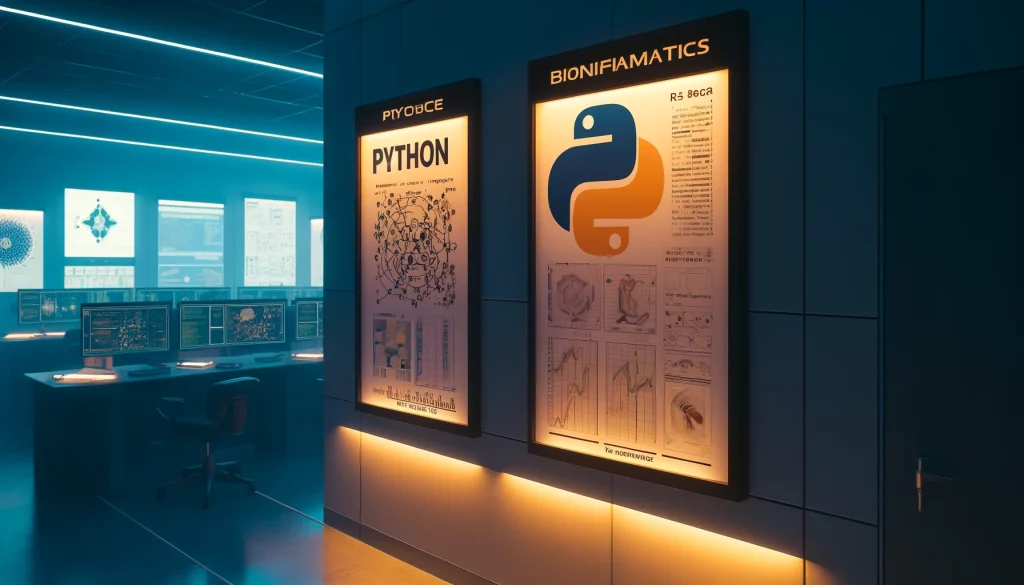Spatial transcriptomics is revolutionizing the field of omics by allowing researchers to visualize gene expression patterns within their native spatial context. From its introduction in this article, spatial transcriptomics provided a deeper understanding of tissue architecture in various conditions. In the traditional transcriptomic approach, when we perform techniques such as bulk RNA-seq, we investigate the expression of genes in a homogenized tissue, which is the average expression of various cells, without noticing their spatial information. In 2020, this method was considered the method of the year by nature. This article offers a detailed exploration of spatial transcriptomics, covering its methodologies, applications, and the latest technologies driving this transformative approach.
How is Spatial Transcriptomics performed?
Based on the method introduced by Ståhl et al. in 2016, first reverse-transcription oligo(dT) primers are immobilized on glass slides. Subsequently, tissue sections—in their study, sections from the adult mouse olfactory bulb—are placed on these slides. Once the tissue is fixed and stained, an image is captured to preserve and highlight structural details. The next step involves permeabilizing the tissue, facilitating the reverse transcription process needed to synthesize cDNA from the mRNA using fluorescently labelled nucleotides. Following this, the tissue is enzymatically removed, leaving behind the fluorescent cDNA attached to the oligonucleotides on the slide. This reveals detailed patterns that correspond to the tissue’s structure. From this cDNA, libraries are synthesized for short-read sequencing. Finally, spatial barcodes are employed to sort the RNA-seq data according to its corresponding array features, thereby aligning the tissue images with the array features for detailed visualization and analysis.
Why spatial transcriptomic is important?
Every cell within an organism is affected by its immediate surroundings, which can significantly influence its activities and responses. By gaining insight into the specific conditions and cellular neighbors around a given cell, researchers can better understand the reasons behind a cell’s particular responses and behaviors.
This innovative technique allows scientists to gather detailed information about the transcriptomes of individual or small clusters of cells. Crucially, spatial transcriptomics preserves the spatial context of these cells, meaning it retains the exact location of each cell or group of cells within the tissue structure.
Understanding the spatial arrangement of cells helps elucidate how cells communicate and function within the body’s more extensive system. For instance, knowing how cells are organized around a tumor can offer significant insights into cancer progression and how cancer cells invade healthy tissue. Similarly, in developmental biology, observing how cells are spatially arranged and how they evolve can provide clues about developmental pathways and the formation of organs.
It’s important to remember that not every spatial technique achieves single-cell resolution or captures information about the entire transcriptome.
Applications of Spatial Transcriptomics
This technology has broad applications in medical research and treatment. Here are some of the key applications of spatial transcriptomic:
- Deepened Insight into Cellular Functionsr Functions. By linking gene expression to specific locations within a tissue, spatial transcriptomics enhances our understanding of cellular functions. This technology reveals how cells interact within their microenvironment and how these interactions affect cellular behavior and function. For example, in cancer, spatial transcriptomics can show how tumor cells modify their environment to promote cancer progression, providing insights into potential therapeutic targets.
- Regenerative Medicine. In this field, spatial transcriptomics is utilized to investigate the processes involved in tissue regeneration and healing. This includes understanding the spatial dynamics of stem cells and their niche, which is crucial for developing effective regenerative therapies. By mapping how cells communicate and evolve during regeneration, researchers can optimize strategies to encourage tissue repair and functional restoration.
- Creating Spatial Maps from Complex Tissues. Spatial transcriptomics allows researchers to create detailed spatial maps of complex tissues, providing a comprehensive view of where different gene expressions occur within a specific tissue structure. This is crucial for understanding the heterogeneous nature of many biological tissues, such as tumors or brain tissue, where cell-to-cell variation plays a significant role in function and disease progression.
- Rebuild Cellular Development Pathways. Spatial transcriptomics can reconstruct cell development pathways by providing snapshots of gene expression in individual cells within their spatial context over time. This allows researchers to trace the lineage and differentiation pathways of cells in complex tissues, such as during embryonic development or the progression of diseases like cancer. Understanding these pathways is crucial for interventions that aim to manipulate cell fate decisions for therapeutic purposes.
- Identification of New Drug Targets. By mapping the expression of genes across different tissue regions, spatial transcriptomics helps identify new drug targets by elucidating the roles of specific genes and their products in disease contexts. This spatial information can reveal novel targets only relevant to particular tissue microenvironments or pathological conditions, thereby aiding in developing more effective targeted therapies.
Key Technologies in Spatial Transcriptomics
From the first approach until now, several workflows and technologies have been developed to generate spatial transcriptomics. This article provided a wealth amount of information about these technologies. in this section, you will find an overview of each method:
- Sequencing-Based Methods: These methods utilize spatially barcoded microarrays to capture RNA from tissue sections and perform unbiased whole transcriptome analysis. Technologies like 10X Genomics Visium, Slide-seq, Stereo-seq, and Light-seq are in this category.
- Probe-Based Methods: These methods use pre-designed oligonucleotide probes that specifically bind to targeted RNA sequences within tissue samples. The approach is tailored to study known genes of interest with high specificity. Technologies such as NanoString’s digital spatial profiling use in situ hybridization probes to capture and quantify RNA transcripts in selected regions of interest, providing targeted spatial transcriptomic data.
- Imaging-Based Methods: Similar to the probe-based spatial transcriptomic method, these techniques also rely on in situ hybridization but with complementary fluorescent probes. These involve fluorescent probes that bind to RNA sequences and are visualized through successive imaging cycles. This allows for the detailed localization and quantification of RNA molecules within cells. Technologies such as CosMx SMI, MERFISH, STARmap, and seqFISH are considered in this category.
- Image-Guided Spatially Resolved Single Cell Sequencing: This method combines live imaging and microdissection to isolate single cells from specific tissue regions. It integrates high-resolution microscopy and single-cell RNA sequencing to provide spatial and transcriptomic data simultaneously. Methods like NICHE-seq and spatially annotated FUNseq combine advanced microscopy techniques with single-cell RNA sequencing, allowing detailed analysis of spatially distinct cells within their native tissue context.
Conclusion
Spatial transcriptomics is a transformative approach enabling researchers to map gene expression data within the tissue context, revealing cellular interactions and organization vital for understanding complex biological processes and disease mechanisms. This field is growing fast, and technologies that generate spatial data offer unique insights with varying resolutions and sensitivities. As this field evolves, it promises to deepen our understanding of cellular functions and the spatial interplay within tissues, enhancing our ability to diagnose and treat diseases more effectively.





